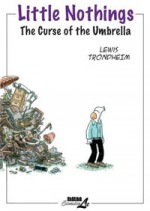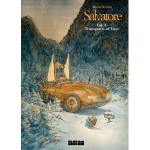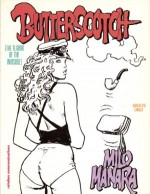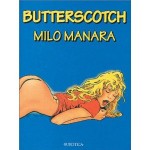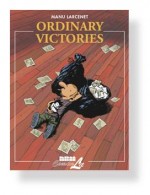
By Manu Larcenet, colours by Patrice Larcenet, translated by Joe Johnson (NBM/ComicsLit)
Complete Set ISBN: 978-1-56163-600-6. Vol. 1 ISBN: 978-1-56163-423-1 Vol. 2 ISBN: 978-1-56163-
One of the very best European comics series of recent times is now available as a complete bargain-priced banded set.
Ordinary Victories examines the introspective and incidental life of neurotic, left-leaning, change-dreading Marco Louis in the years before the conservative/centrist Sarkozy government came to power. In mesmerising, eulogistic and winningly comedic narrative and alternating modes of illustration ranging from brashly big-foot to sensitively realistic, the soul-searching isolationist examines himself, his past, his art and his family and consequently finds a future he can at least settle for…
The four albums released in France translate to two solidly satisfying tomes here and opens with Marco, who has been subject to devastating panic attacks for years, not getting through to his therapist before giving up visiting his happy, married and well-adjusted brother to get high, chill out and reminisce.
Marco is just the kind of guy who lets life get to him. Visiting his over-protective mum and frail dad only heightens his general tension, but he does get a hint of parts of his father’s life he never before knew.
Returning to his isolated rural cottage and Adolf, his maniacal cat, Marco tries to get back to his photo-journalism job, but the despair and hatred he feels for the whole rat-race won’t go away. Wracked by anxiety and nightmares Marco takes his cat for walks in the woods where he encounters an abusive, trespass-obsessed farmer and a wise old gentleman.
When Adolf is savaged by a dog Marco meets a charming vet who inexplicably likes him, but life compensates for the nice event by getting Marco fired…
Unemployed but obsessed with his art, Marco still resists change: Emily is making noises about moving in together but the potential commitment terrifies him. He certainly can’t handle her outright demands for a baby…
The country seems to be heading for outright fascism too, his neighbour is a maniac and when he visits the old gentleman Marco discovers an unsettling connection to his dad’s mysterious war service. His paranoia goes into overdrive when he finds out what kind of a soldier old man Mesrin was and with his world spinning the angst-wracked artist is compelled to change or die…
The second part of volume 1 is ‘Negligible Amounts’ and sees the now officially-paired couple Emily and Marco visiting his parents where the son learns some unpleasant truths about his father’s health. The once vigorous and sharp-witted ship-worker is fading…
Marco’s shots of the dying Shipyard win him a Paris gallery show, but meeting his artistic and creative heroes proves a painful experience. Still the promise of a book might boost his reputation and save his dad’s old work comrades from redundancy, even if some of them are already talking of closures, unemployment and even changing their political allegiances…
With Right-wing radicalism in the streets and racism in the air Marco and his brother are pretty glum and soon after pretty drunk. When another panic attack hits hard the photographer only narrowly avoids an extended stay in a psychiatric unit… and then he gets the phone call about his father…

Volume 2 of Ordinary Victories opens with the eponymous ‘What is Precious’ as Marco slowly adjusts to his father’s death, getting even closer to Emily… at least when her incessant demands for a baby aren’t freaking him out.
With a book deal and a new analyst, things seem to be progressing but the contents of his dad’s diary provides fresh material for passive hysteria, as does his previously indomitable mother’s new attitude. Unable to stand the strain any longer, Marco confronts Mesrin and demands to know just what ghastly atrocities the old man and the deceased ship-builder actually committed…
The final chapter ‘Hammering Nails’ opens with new mum Emily and their delightful daughter Maude providing new and different anxieties for Marco, especially since he finally agreed to move the family into a bigger house…
The Shipyard is in its final days and as Marco photographs the resigned but striking workers his thoughts are more confused than ever. Everybody else either accepts or fights life’s vicissitudes: why can’t he do either?
There’s yet another election coming and everybody thinks a great change is coming – but for Marco that’s never been a comforting notion…
This is a subtle, funny and deeply contemplative tale, deftly understated and compellingly seductive. A commonplace guy handles nothing we blokes haven’t all faced and reacts pretty much as any guy would: astonished to make it safely through another day, always astonished that our partner seems to love us, claims to know us and yet stays anyway. Ordinary Victories is about frustration, loss, disappointment, and yes, occasional triumphs. These books are wonderful, sublime, magical comics and you really should read them…
© Dargaud 2005, 2007, 2008 by Larcenet. Translation © 2005, 2008 NBM.

